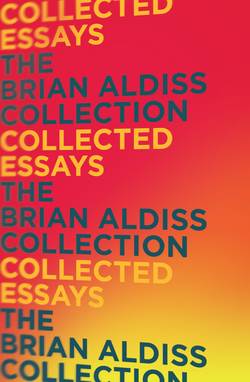Читать книгу Collected Essays - Brian Aldiss - Страница 24
JEKYLL
ОглавлениеAll the characters in Stevenson’s story are isolated males: Mr Utterson, the lawyer; his friend and distant relation, Mr Enfield; Poole, the servant; and, of course, Dr Jekyll himself. They live separately in a city, the loneliest place. Jekyll himself foresees this isolation increasing in the future, when men become scarcely human, but rather ‘incongruous and independent denizens’. In the story, London masquerades as Stevenson’s native Edinburgh. All told, it’s a good setting for horror.
The horror is of a markedly cerebral kind. There are no monstrous creatures going about the world, as in Frankenstein or Dracula. Of course there is Hyde. But Hyde is a projection of Jekyll. This is why the story still interests us: Dr Jekyll and Mr Hyde is a pre-Jungian fable, a vivid illustration of the Shadow side of a decent man, that aspect—vigorously suppressed by the religious and ‘unco’ guid’ of Victorian Calvinist Scotland—of our natures whose presence we all have to acknowledge. The aspect which, as Jekyll says of his drug, shakes ‘the very fortress of identity’.
The fable concerns the shattering of this fortress. This is the point. The drug Jekyll takes is not the instrument of Hyde’s coming into being. The drug is merely a neutral means of transmission. In Jekyll’s words, ‘The drug had no discriminating action; it was neither diabolical nor divine; but it shook the doors of the prison house of my disposition’.
With these powerful words, Jekyll admits that had he undertaken his experiment in a nobler spirit, he might have released from within himself ‘an angel instead of a fiend’. How remarkably this reflection of the 1880s recalls comments on LSD experiments of the 1950s!
The best part of the novella—it’s scarcely a novel—resides in the final section, in Jekyll’s statement. It’s wonderful, a tour de force, although at the same time rather bloodless. Hyde’s sins are no more than alluded to. This is more a sermon than a horror tale. Here again, the future is prefigured. The drug cannot be correctly administered, or its effects controlled; we are reminded of L-dopa in Oliver Sachs’s remarkable story Awakenings, where any dose proved too little or too much.
Here is Stevenson’s moral imagination speaking, fleshing out what started as a dream (as did Mary Shelley’s Frankenstein). ‘It fell out with me, as it falls with so vast a majority of my fellows, that I chose the better part and was found wanting in the strength to keep to it.’ This is the Calvinist speaking, trying to hold to a rigid morality which the world was to cast aside in another generation or so, letting loose the Hyde of the First World War, 1914–1918.
Like the other two nineteenth-century novels of terror already referred to, Dr Jekyll and Mr Hyde has frequently been filmed. To my mind, all film versions of Frankenstein and Dracula are crude and almost parodic versions of the novels themselves.
Such is not the case with film versions of Dr Jekyll. The horror, as I’ve said, is too cerebral, too bloodless, for the movies. Injustice must be seen to be done. We have to be shown Fredric March or Spencer Tracy, or whoever it is, consorting with prostitutes, wielding the stick, being cruel. We have to see the beaker foam, with its deadly but seductive brew, to watch the terrible transformation, whiskers and all, take place … To witness what is at first willed become involuntary.
I believe Stevenson, the old Teller of Tales, would be pleased that Hollywood reached towards something darker and more disturbing than Treasure Island.
